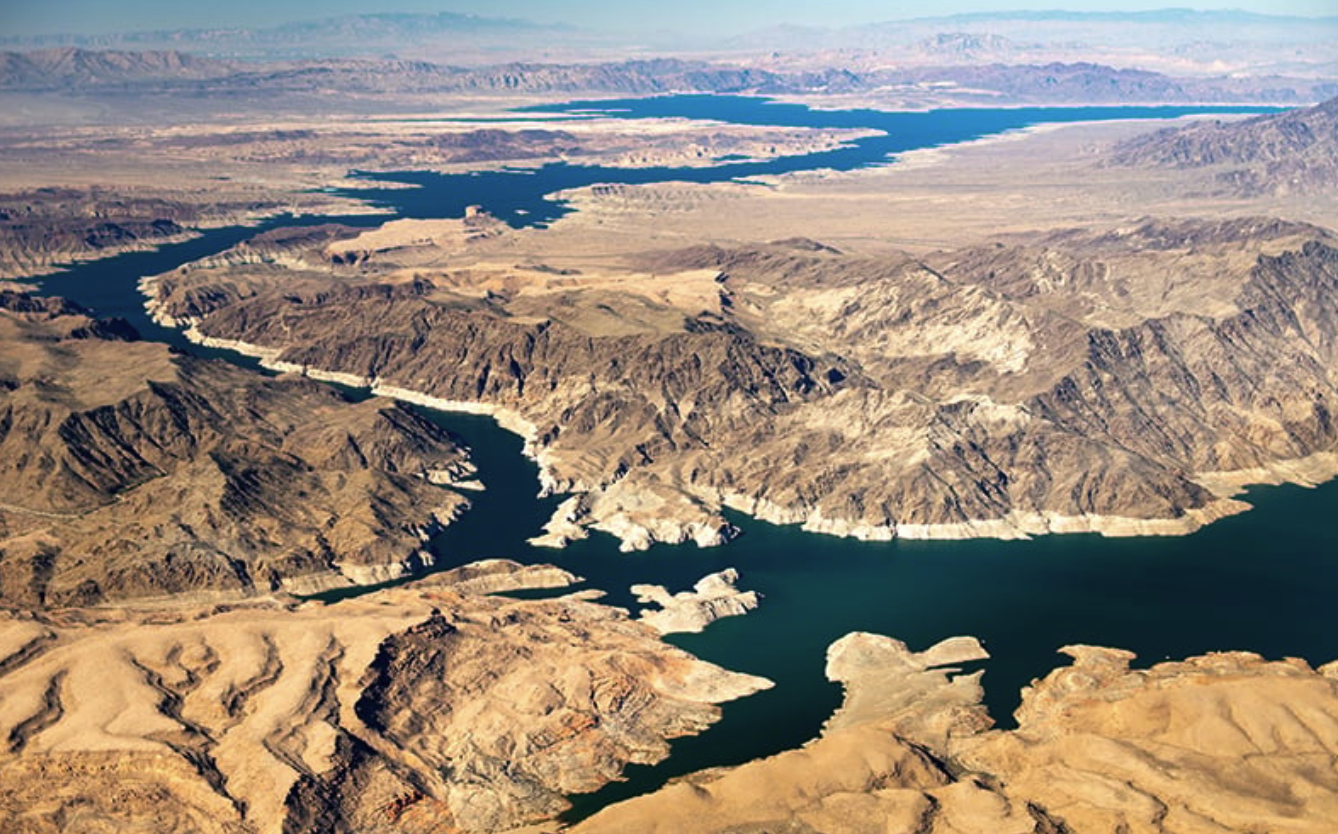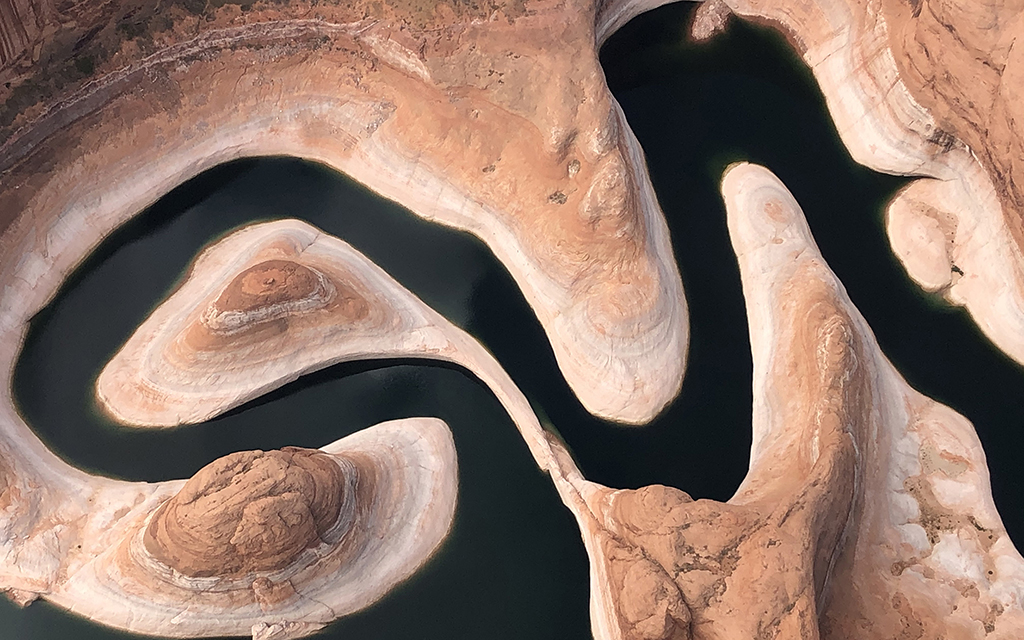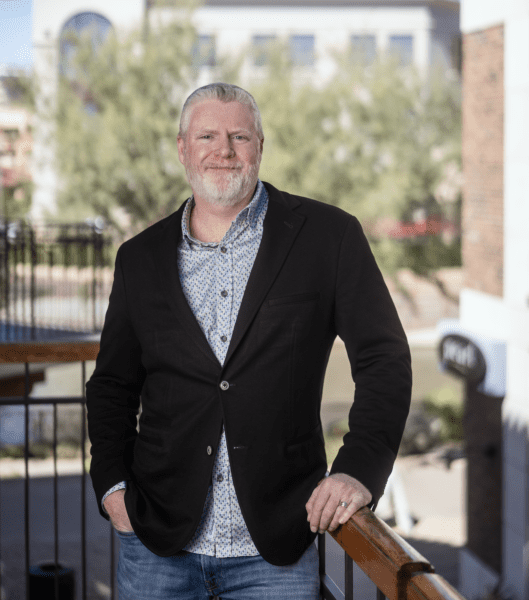Ole Braatelien/Cronkite News
Lake Mead and the rest of the Colorado River system are shrinking rapidly. Arizona Gov. Katie Hobbs and water leaders on Thursday said the state will ‘lead the way’ in a new water conservation agreement with Nevada and California. || File photo by Ted Wood/The Water Desk
PHOENIX – While a Colorado River conservation plan has yet to be approved by the federal government, Gov. Katie Hobbs made two things clear at a news conference Thursday: Arizona will lead the way in the tri-state agreement, and Arizonans need not worry about a water-use crackdown.
The news conference came days after the plan was announced Monday. The agreement between the lower basin states of Arizona, California and Nevada seeks to conserve 3 million acre feet of Colorado River water by 2026.
“Whether you are a new parent worried about the future of your child, a business owner concerned about the sustainability of our economy, or a student who just wants the government to take climate change seriously, Arizona is taking action,” Hobbs said at the conference. “I look forward to Arizona leading the way in continuing to build an Arizona for everyone.”
Colorado River basin states have long been planning for water restrictions, and the Biden administration had given the lower basin states a May 31 deadline before the federal government would take action.
Tom Buschatzke, the Arizona Department of Water Resources director, said Hobbs meant it literally when she said Arizona would lead the way.
Of the 3 million acre feet in question, Arizona is expected to do the majority of the conserving.
“The numbers are not yet completely defined because, as was discussed, all of this is being done through voluntary agreements,” Buschatzke said at the conference. “But we’re probably on target for somewhere close to 1.8 million acre feet or so coming out of Arizona.”
That’s between 50% and 60% of the water conservation, which is the “bulk of the heavy lifting,” he said. California, however, will conserve roughly half as much.
“I don’t have the numbers for Nevada and Mexico off the top of my head, but obviously a substantial portion of the water is coming out of those entities as well,” he said.
After Hobbs’ tweeted about the plan on Monday, some users expressed frustration about the disparity between Arizona and California’s conservation efforts.
RELATED STORY
Arizona, California, Nevada agree on cuts to Colorado River water use
For instance, one user asked why Arizona was “giving” its water to California, citing another tweet that said California was dumping excess water into the ocean. The reason? There was no place to store it.
The water conservation plan means some Arizona cities and towns will have to conserve more than others.
Buschatzke said the city of Phoenix could need to conserve 150,000 acre feet of water, while Tucson could face about 110,000 acre feet and Glendale could need to conserve 21,000 acre feet over the next three years.
But Hobbs said the plan wouldn’t significantly change life for most Arizonans.
“No Arizonan is going to be forced to cut their water use. I think that’s the bottom line,” Hobbs said.
Buschatzke agreed.
“Somebody sitting in their home or business, they’re not going to get a phone call from a city and say, ‘You’ve got to cut back.’ That is not part of this deal,” he said. “You might see calls from some of these cities to maybe start reducing some of their outdoor water use, for example.”
Gila River Indian Community Gov. Stephen Roe Lewis, who also attended the news conference, voiced approval of the plan.
Lewis said the Gila River Indian Community also is doing its part to conserve water: “We see ourselves modeling good behavior in the time of this historic drought.”
Part of this conservation plan involves compensation from the federal government.
Buschatzke said the federal government, under the Inflation Reduction Act, would financially compensate for 2.5 million acre feet of water conserved.
“It was a very important part of the discussions with the federal government about how much was going to be compensated under the Inflation Reduction Act and how much would come forward from the states without that federal money,” Buschatzke said.













